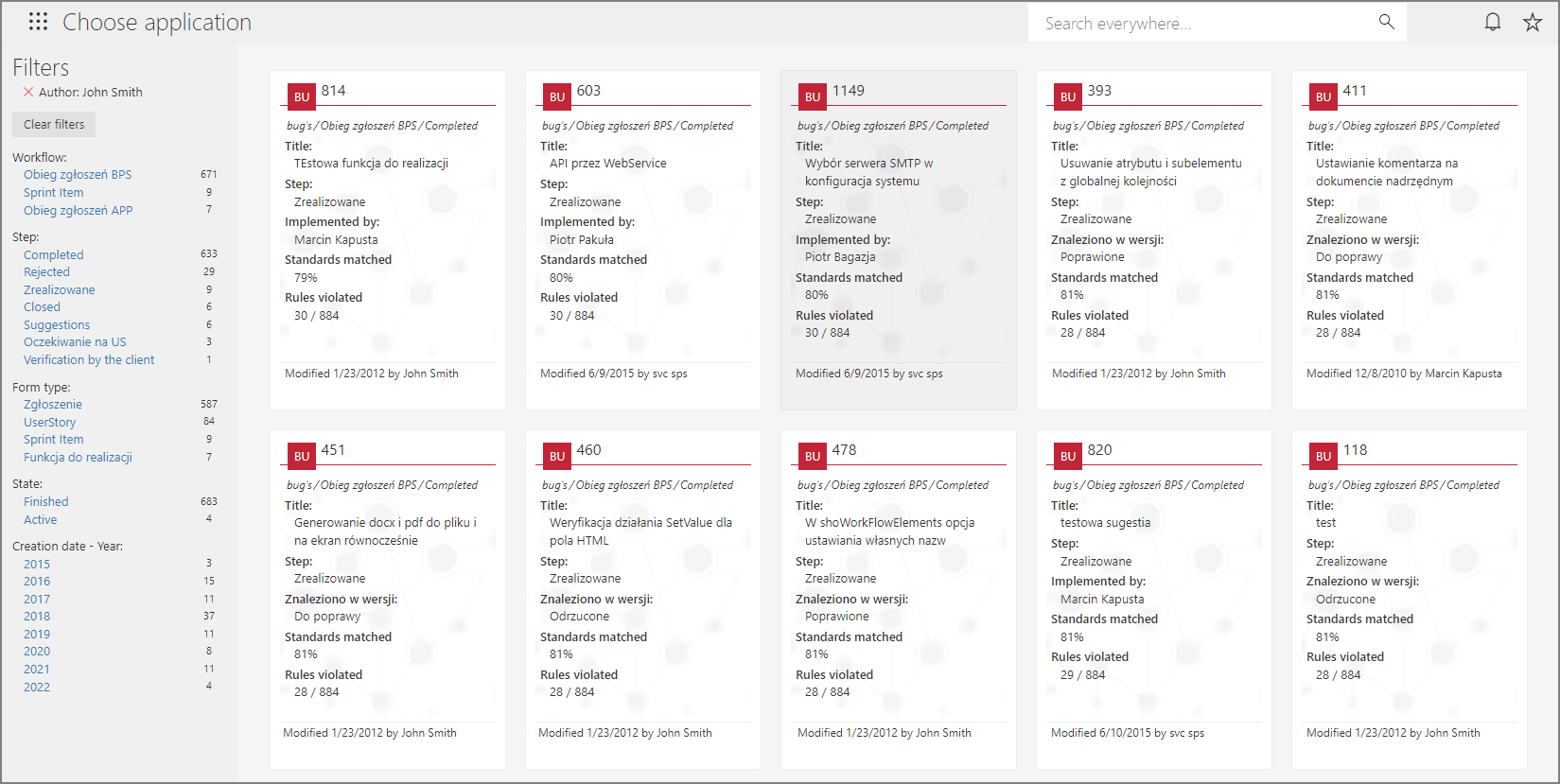Anomalies
The report shows atypical instances in processes, for example: an order for an amount that differs significantly from the value of existing orders, or leave requests that involve a very long period of employee absence.
Running anomaly analysis allows you to automatically create a process description – a set of AI rules based on real data entered by users. For each analyzed element, the percentage of Standards matched and the exact number of Violated rules are determined.

A set of AI rules is created by using artificial intelligence. A random sample of data is selected for the process, based on current and historical instance values (for each workflow, form type, and step), and then rules are created which encompass the most common (covering over 75% of cases) values or ranges of values for all numerical and categorical fields.
Moreover, dependencies between various fields on the form are created, and norms based on statistics about editing a given form field (whether the field should be completed or can be modified) are also designated. After creating a set of rules for the process, each instance registered in it is verified to what extent it matches the designated norms. Based on this match, the instance is classified as more or less typical on the anomalies report.
The resulting set of AI rules creates a description of current data entered in the process and thus can also be used to verify the assumptions in the implementation of the workflow (e.g. additional validation of the entered values). With appropriate configuration, we can define which of the detected rules are more important for us when determining atypical instances, as well as define what their further processing should look like.
Detailed information on the report and its configuration is available in the article Analysis of anomalies in processes on our technical blog.